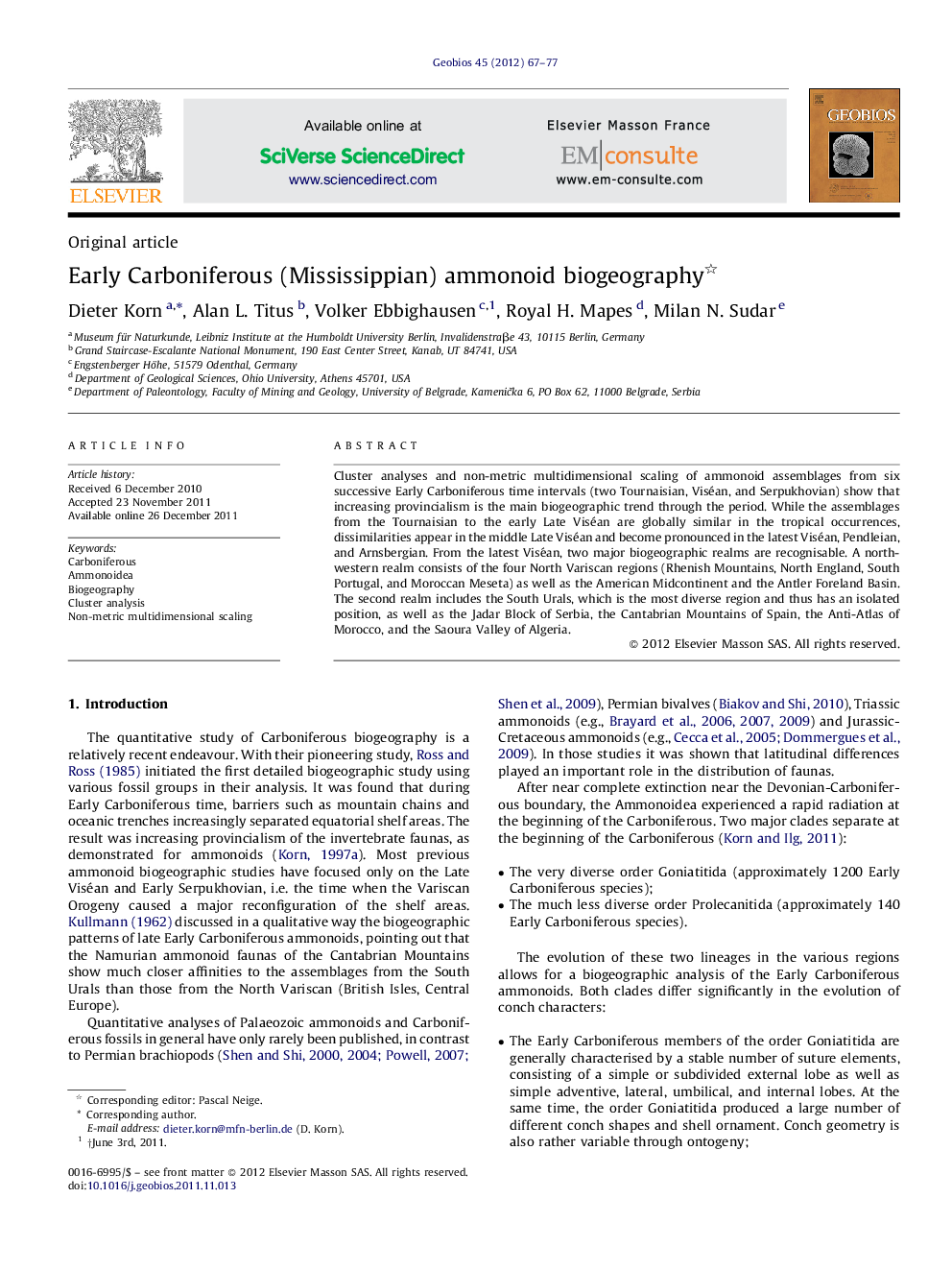| Article ID | Journal | Published Year | Pages | File Type |
|---|---|---|---|---|
| 4748099 | Geobios | 2012 | 11 Pages |
Cluster analyses and non-metric multidimensional scaling of ammonoid assemblages from six successive Early Carboniferous time intervals (two Tournaisian, Viséan, and Serpukhovian) show that increasing provincialism is the main biogeographic trend through the period. While the assemblages from the Tournaisian to the early Late Viséan are globally similar in the tropical occurrences, dissimilarities appear in the middle Late Viséan and become pronounced in the latest Viséan, Pendleian, and Arnsbergian. From the latest Viséan, two major biogeographic realms are recognisable. A north-western realm consists of the four North Variscan regions (Rhenish Mountains, North England, South Portugal, and Moroccan Meseta) as well as the American Midcontinent and the Antler Foreland Basin. The second realm includes the South Urals, which is the most diverse region and thus has an isolated position, as well as the Jadar Block of Serbia, the Cantabrian Mountains of Spain, the Anti-Atlas of Morocco, and the Saoura Valley of Algeria.
